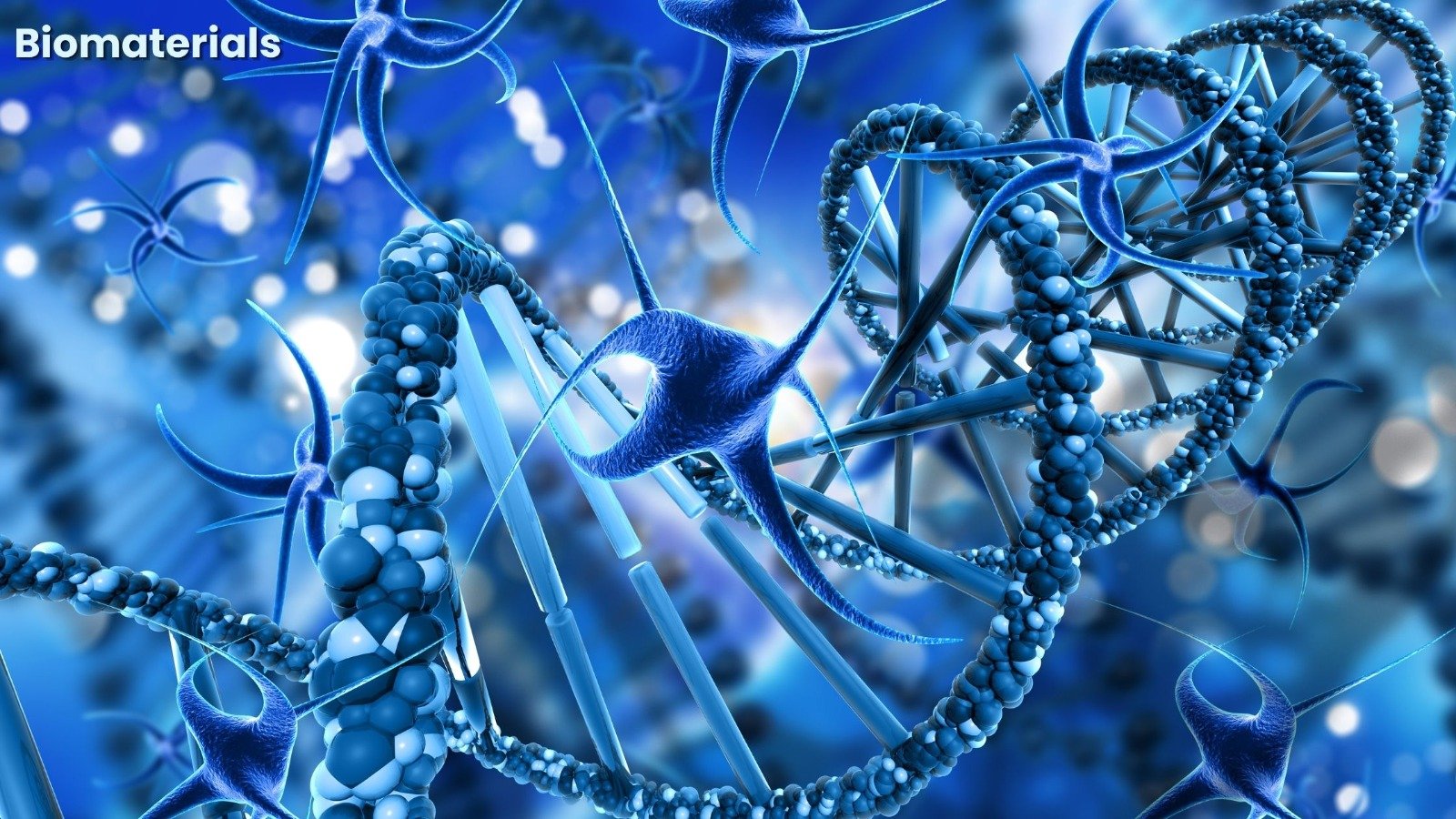
Biomaterials for Regenerative Medicine and Implants
- by phdblog
1.Introduction
In the rapidly evolving field of medicine, biomaterials are emerging as a transformative force, playing a pivotal role in regenerative medicine and implant technology. These specialized materials, designed to interact with biological systems, offer groundbreaking solutions for repairing, replacing, or regenerating damaged tissues and organs. This blog delves into the fascinating world of biomaterials, exploring their types, applications, and potential to revolutionize healthcare.
2.What Are Biomaterials?
Biomaterials are natural or synthetic substances that can interact with the human body without causing adverse reactions (Marin et al., 2020). They serve as the building blocks for a wide range of medical applications, including tissue engineering, drug delivery systems, and medical implants. Biomaterials must exhibit biocompatibility, durability, and functionality to fulfill their roles effectively.
3.Types of Biomaterials
3.1 Natural Biomaterials
Natural biomaterials are derived from biological sources such as collagen, silk, and chitosan. These materials are valued for their inherent biocompatibility and ability to support cell attachment and growth.
Collagen: Widely used in wound healing and tissue engineering scaffolds (Mathew-Steiner et al., 2021).
Silk: Known for its strength and biodegradability, silk is used in sutures and tissue regeneration.
Chitosan: Derived from crustacean shells, it is used for wound dressings and drug delivery.
3.2 Synthetic Biomaterials
Synthetic biomaterials offer precise control over properties like strength, elasticity, and degradation rates. Common examples include:
Polymers: Such as polylactic acid (PLA) and polyglycolic acid (PGA), used in sutures and drug delivery systems.
Metals: Titanium and stainless steel are extensively used in orthopedic and dental implants due to their strength and corrosion resistance.
Ceramics: Known for their hardness and biocompatibility, ceramics like hydroxyapatite are used in bone grafts and dental implants.
3.3 Hybrid Biomaterials
Hybrid biomaterials combine natural and synthetic components to achieve the best of both worlds. For instance, combining collagen with synthetic polymers can enhance durability while maintaining biocompatibility.
4. Applications in Regenerative Medicine
Regenerative medicine focuses on repairing or replacing damaged tissues and organs (Mansouri et al., 2021). Biomaterials play a critical role in this field by serving as scaffolds, drug delivery systems, and bioactive agents.
4.1 Tissue Engineering Scaffolds
Biomaterials provide a structural framework for cells to grow, enabling the regeneration of tissues like skin, bone, and cartilage. These scaffolds mimic the extracellular matrix, facilitating cell adhesion, proliferation, and differentiation.
4.2 Drug Delivery Systems
Biomaterials enable the controlled release of therapeutic agents to specific sites in the body, reducing side effects and improving treatment efficacy. For instance, biodegradable polymers can release drugs over an extended period, aiding in chronic disease management.
4.3 Stem Cell Therapy
Biomaterials act as carriers for stem cells, delivering them to damaged tissues and providing the necessary environment for differentiation and repair.
5.Applications in Implants
Biomaterials have revolutionized the design and functionality of medical implants, improving patient outcomes and quality of life (Abyzova et al., 2023).
5.1 Orthopedic Implants
Materials like titanium and ceramic composites are used in joint replacements and bone plates due to their strength, biocompatibility, and ability to integrate with bone (Shekhawat et al., 2021).
5.2 Dental Implants
Titanium remains the gold standard for dental implants, offering excellent osseointegration and durability.
5.3 Cardiovascular Implants
Biomaterials like polymers and metals are used in stents, pacemakers, and artificial heart valves. These materials ensure compatibility with the circulatory system while minimizing the risk of clot formation.
5.4 Soft Tissue Implants
Biomaterials such as silicone are widely used in reconstructive surgeries, including breast and facial implants.
6.Challenges and Future Directions
While the potential of biomaterials is immense, several challenges remain:
Biocompatibility Issues: Despite advancements, ensuring that biomaterials do not trigger immune responses or infections remains a significant hurdle.
Long-term Performance: Implants and scaffolds must retain their functionality over extended periods without degrading prematurely or losing their mechanical properties.
Cost and Accessibility: The high cost of advanced biomaterials and manufacturing processes limits their accessibility, particularly in developing regions.
Future Prospects: The integration of nanotechnology, 3D printing, and bioprinting is poised to revolutionize biomaterials. For instance, nanomaterials can enhance the mechanical and biological properties of implants, while 3D printing allows for the customization of implants to fit individual patients.
Additionally, bioactive materials capable of promoting self-healing and tissue regeneration are on the horizon.
7.Conclusion
Biomaterials represent a cornerstone of modern regenerative medicine and implant technology, offering solutions that were once the realm of science fiction. From facilitating the regeneration of tissues to enhancing the functionality of implants, these materials are paving the way for a new era in healthcare. As research and technology continue to evolve, the possibilities for biomaterials in improving human health are virtually limitless. By harnessing the potential of biomaterials, we are not just repairing the body but reshaping the future of medicine.
8.References
Abyzova, E., Dogadina, E., Rodriguez, R. D., Petrov, I., Kolesnikova, Y., Zhou, M., … & Sheremet, E. (2023). Beyond Tissue replacement: The Emerging role of smart implants in healthcare. Materials Today Bio, 100784.
Mansouri, V., Beheshtizadeh, N., Gharibshahian, M., Sabouri, L., Varzandeh, M., & Rezaei, N. (2021). Recent advances in regenerative medicine strategies for cancer treatment. Biomedicine & Pharmacotherapy, 141, 111875.
Marin, E., Boschetto, F., & Pezzotti, G. (2020). Biomaterials and biocompatibility: An historical overview. Journal of Biomedical Materials Research Part A, 108(8), 1617-1633.
Mathew-Steiner, S. S., Roy, S., & Sen, C. K. (2021). Collagen in wound healing. Bioengineering, 8(5), 63.
Shekhawat, D., Singh, A., Banerjee, M. K., Singh, T., & Patnaik, A. (2021). Bioceramic composites for orthopaedic applications: A comprehensive review of mechanical, biological, and microstructural properties. Ceramics International, 47(3), 3013-3030.
1.Introduction In the rapidly evolving field of medicine, biomaterials are emerging as a transformative force, playing a pivotal role in regenerative medicine and implant technology. These specialized materials, designed to interact with biological systems, offer groundbreaking solutions for repairing, replacing, or regenerating damaged tissues and organs. This blog delves into the fascinating world of biomaterials,…
